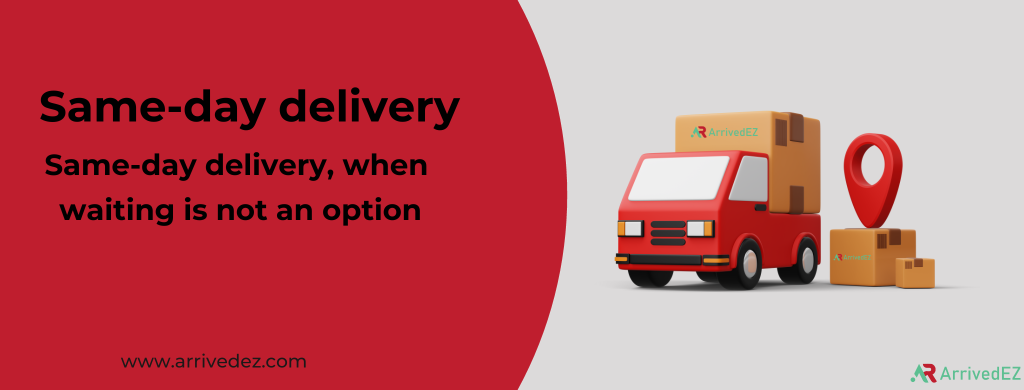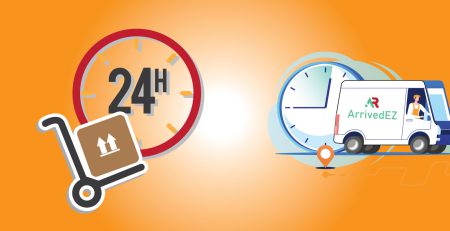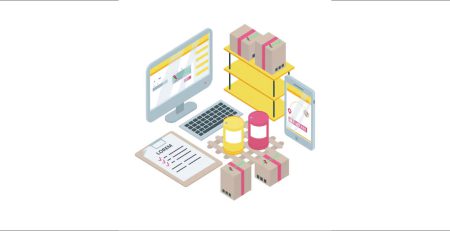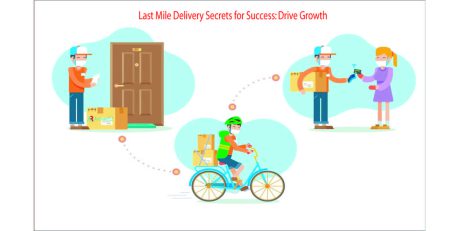The Evolution of Same-Day Delivery: A Comprehensive History
Arrived EZ2024-01-12T12:14:21+00:00
In the fast-paced world of e-commerce, the demand for convenient and swift delivery options has led to the evolution of same-day delivery services. From humble beginnings to the sophisticated systems we see today, the history of same-day delivery is a fascinating journey marked by technological advancements, changing consumer expectations, and innovative business strategies.
- The Genesis of Same-Day Delivery:
The genesis of same-day delivery can be traced back to the early 20th century, where its origins lie in the practices of local businesses. During this period, businesses recognized the importance of providing immediate delivery services to cater to the needs of their communities. The driving force behind this early form of expedited delivery was the desire to offer a higher level of service and convenience to customers.
As urbanization began to escalate during the 20th century, the dynamics of commerce and consumer behaviour underwent significant changes. With more people residing in urban areas, the demand for quicker and more convenient shopping experiences grew. Consumers increasingly sought ways to streamline their daily routines, and the ability to receive goods on the same day became a valuable proposition.
Local businesses, cognizant of these changing consumer preferences and the competitive landscape, started to emphasize prompt delivery services. This marked the initial steps towards the formalization and popularization of same-day delivery. The concept gained traction as businesses recognized that providing swift delivery options could set them apart in a crowded market and enhance customer loyalty.
The evolution of technology and transportation infrastructure also played a role in shaping the concept of same-day delivery. As transportation networks improved and communication technologies advanced, businesses were able to coordinate and fulfil orders more efficiently. This progress further fueled the growth of same-day delivery services, making them more feasible and appealing to both businesses and consumers alike.
The genesis of same-day delivery can be attributed to the localized initiatives of businesses in the early 20th century, driven by a commitment to meeting the immediate needs of their communities. The concept gained momentum as urbanization increased, consumer expectations evolved, and advancements in technology and transportation facilitated the efficient execution of rapid delivery services.
- Pioneering Efforts in the 20th Century:
Certainly! The statement refers to the pioneering efforts made in the 20th century to establish the groundwork for same-day delivery services. Let’s break down the key points:
Introduction of Mail and Parcel Services by Postal Authorities:
In the 20th century, postal authorities in major cities took a significant step by introducing mail and parcel services. This development marked the initial establishment of organized systems for sending and receiving packages.
Foundation for Same-Day Delivery:
The initiation of mail and parcel services played a crucial role in laying the foundation for same-day delivery. While traditional postal services were primarily focused on standard delivery times, the introduction of these services hinted at the possibility of quicker, more immediate delivery options.
Local Couriers and Bicycle Messengers:
As an extension of the efforts by postal authorities, local couriers and bicycle messengers emerged as key players in the realm of quick package delivery. These individuals and small businesses specialized in swift, localized deliveries within city limits.
Limitations Services:
Despite the advancements, it’s noted that these early same-day delivery services had limitations in terms of their scope and widespread adoption. The services were often confined to major cities and didn’t extend to broader regions.
Swift Delivery within City Limits:
The emphasis on local couriers and bicycle messengers highlights the need for rapid delivery within the geographical confines of a city. This was a response to the growing demand for quicker turnaround times in the delivery of packages.
Limited Adoption:
While these pioneering efforts were instrumental in introducing the concept of same-day delivery, they were not widely adopted on a larger scale. This could be attributed to factors such as logistical challenges, cost considerations, and the lack of comprehensive infrastructure to support widespread same-day delivery services.
In summary, the 20th century saw the initiation of key services, such as mail and parcel delivery by postal authorities, and the involvement of local couriers and bicycle messengers, which set the stage for the evolution of same-day delivery. Despite their contributions, the services were constrained in scope and faced challenges in achieving widespread adoption during that time.
III. Technological Advancements in the Late 20th Century:
Certainly! The late 20th century was a transformative period marked by notable technological advancements that revolutionized various industries, including the logistics and delivery sector. Several key developments significantly contributed to the efficiency and scalability of same-day delivery services during this time.
Computerized Logistics Systems:
The integration of computerized logistics systems marked a pivotal shift in the management of supply chains and delivery operations. These systems allowed for more precise tracking, monitoring, and optimization of the entire logistics process.
Automation in inventory management, order processing, and route optimization became possible with the implementation of computer systems. This, in turn, led to reduced errors, increased accuracy, and overall improved efficiency in the delivery process.
GPS Technology:
The widespread adoption of Global Positioning System (GPS) technology was a game-changer for the logistics and transportation industries. GPS enabled real-time tracking and monitoring of vehicles, providing accurate location information at any given moment.
With GPS, delivery companies could optimize routes, monitor vehicle movements, and provide customers with accurate and up-to-date information about the status and estimated time of arrival of their shipments. This not only improved efficiency but also enhanced customer satisfaction.
Mobile Communication:
The advent and widespread use of mobile communication devices, such as cell phones, played a crucial role in facilitating real-time communication between various stakeholders in the delivery process.
Delivery personnel could stay connected with dispatchers, customers, and other team members, leading to better coordination and faster response times. Mobile communication devices also allowed for instant updates and notifications, keeping all parties informed about any changes or delays in the delivery schedule.
Data Connectivity and Internet:
The late 20th century witnessed the rise of the internet, which significantly impacted the logistics and delivery sectors. The ability to transmit data quickly and reliably over the internet facilitated the exchange of information between different nodes in the supply chain.
Online platforms and systems enable businesses to manage orders, track shipments, and communicate with customers in a more seamless and efficient manner. This connectivity paved the way for the development of e-commerce and online retail, further driving the demand for faster and more reliable delivery services.
- E-commerce Boom and the Rise of Same-Day Delivery Giants:
The e-commerce boom and the rise of same-day delivery giants represent a significant shift in consumer behaviour and the retail industry. Let’s break down the key points of this phenomenon:
E-commerce Transformation:
The late 20th and early 21st centuries witnessed a dramatic shift in the way people shop, with a substantial increase in online retail transactions.
E-commerce platforms allow consumers to browse and purchase products from the comfort of their homes, eliminating the need to visit physical stores.
Demand for Faster Shipping:
As e-commerce gained popularity, consumers began to seek more convenience, including faster shipping options.
Traditional shipping methods, which often took several days or even weeks, no longer met the evolving expectations of consumers accustomed to instant gratification.
Investment in Logistics Infrastructure:
To meet the demand for faster shipping, e-commerce giants like Amazon recognized the need to invest heavily in logistics infrastructure.
This included the development of advanced supply chain systems, strategically located warehouses, and efficient inventory management.
Warehouses and fulfilment centres:
E-commerce companies built extensive networks of warehouses and fulfilment centres to store and manage their inventory effectively.
These facilities were strategically located to enable quicker access to products and reduce shipping times.
Last-Mile Delivery Services:
One of the critical components of achieving same-day delivery was optimizing the last-mile delivery process—the final leg of the shipping journey from the distribution centre to the customer’s doorstep.
Companies employed innovative strategies, such as partnering with local delivery services, using drones, or implementing their own delivery fleets, to expedite last-mile delivery.
Amazon’s Role as a Trailblazer:
Amazon, as a pioneer in e-commerce, played a pivotal role in shaping consumer expectations for fast and reliable shipping.
The company’s commitment to same-day delivery through services like Amazon Prime sets a new standard for the industry.
Impact on Consumer Behaviour:
The availability of same-day delivery options has influenced consumer behavior, fostering a culture of instant gratification.
Customers are more likely to choose retailers that offer expedited shipping, leading to increased competition among e-commerce companies to provide faster and more reliable delivery services.
Challenges and Future Developments:
The rise of same-day delivery also presented challenges, including logistical complexities, cost considerations, and environmental concerns related to increased transportation.
As technology continues to advance, the industry is likely to see further innovations, such as the integration of automation and artificial intelligence in the delivery process.

- Innovations in Last-Mile Delivery:
The “last mile” in the delivery process refers to the final leg of a product’s journey from a distribution centre or a transportation hub to its destination, typically a customer’s doorstep. This stage is often considered the most challenging and expensive part of the delivery process for several reasons:
Complex Urban Environments:
The last mile often involves navigating through complex urban environments with narrow streets, traffic congestion, and various other obstacles. Traditional delivery methods may struggle to efficiently navigate these challenges.
High Delivery Density:
In urban areas, there is usually a high concentration of delivery destinations in a relatively small geographic area. This high delivery density makes it crucial to optimize routes and delivery methods to ensure timely and cost-effective deliveries.
Customer Expectations:
With the rise of e-commerce, customer expectations for fast and reliable delivery have increased. Customers often expect same-day or next-day delivery, putting pressure on companies to streamline their last-mile operations.
To address these challenges, companies have been exploring and implementing innovative solutions in last-mile delivery.
Crowd sourced Delivery:
Some companies leverage the power of the crowd by utilizing independent contractors or gig workers to make deliveries. This model, often facilitated through mobile apps, allows for flexible and scalable delivery services.
Drone Deliveries:
Unmanned aerial vehicles, or drones, have been tested for delivering small packages over short distances. Drones can potentially bypass traffic and deliver packages directly to specific locations, reducing delivery times.
Autonomous Vehicles:
Self-driving vehicles, including ground-based autonomous robots and delivery vans, are being developed and tested for last-mile deliveries. These vehicles have the potential to operate 24/7, reducing labor costs and increasing efficiency.
Smart Locker Systems:
Companies are installing smart lockers in convenient locations, such as grocery stores or public spaces. Customers can pick up their packages from these secure lockers at their convenience, reducing the need for repeated delivery attempts.
Micro-Fulfilment Centres:
Placing smaller fulfilment centres in strategic locations within urban areas can help companies fulfil orders more efficiently. These micro-fulfillment centers are designed to handle a high volume of orders quickly, reducing the distance packages need to travel for last-mile delivery.
These innovations aim to make last-mile delivery more efficient, cost-effective, and environmentally friendly. As technology continues to advance, the combination of these solutions or the emergence of new ones may further transform the landscape of last-mile logistics. Companies are continually experimenting with and investing in these technologies to stay competitive in the evolving world of e-commerce and delivery services.
- The Role of Data and Analytics:
The role of data and analytics in the evolution of same-day delivery is pivotal and transformative. Here’s an elaborate explanation of the key points:
Real-time Data Analysis:
Same-day delivery relies on real-time data analysis to make instant decisions. Through the use of advanced algorithms, companies can process data as it is generated, allowing for quick and adaptive responses to changing conditions.
Real-time data includes information about current traffic conditions, weather, inventory levels, and order volumes. Analyzing this data helps in dynamically adjusting delivery routes to avoid delays and optimize the overall delivery process.
Optimizing Delivery Routes:
Efficient route planning is crucial for same-day delivery success. By leveraging data and analytics, companies can optimize delivery routes in real-time based on factors such as traffic congestion, road closures, and customer locations.
Algorithms can continuously revaluate and adjust routes as new data becomes available, ensuring that delivery vehicles take the most efficient paths to reach their destinations promptly. This not only reduces delivery times but also minimizes fuel consumption and operational costs.
Demand Prediction:
Accurately predicting demand patterns is a significant challenge in the dynamic landscape of same-day delivery. Data analytics plays a crucial role in forecasting demand based on historical data, current market trends, and external factors.
By understanding demand fluctuations, companies can allocate resources more effectively, ensuring that they have the right amount of inventory at the right locations. This prevents stock outs and overstock situations, contributing to a smoother and more reliable same-day delivery service.
Enhancing Logistics Efficiency:
The overall efficiency of logistics operations is greatly enhanced through data-driven insights. Analytics helps in identifying bottlenecks and inefficiencies in the supply chain, allowing companies to implement targeted improvements.
From warehouse management to order processing and last-mile delivery, data analytics provides actionable insights that lead to streamlined operations. This, in turn, contributes to a more cost-effective and competitive same-day delivery service.
Cost Optimization:
Same-day delivery can be costly due to the need for expedited processes and faster transportation. Data and analytics help in minimizing operational costs by improving resource allocation, reducing fuel consumption, and optimizing workforce efficiency.
By making data-driven decisions, companies can achieve a balance between the customer’s expectation for quick delivery and the need to maintain profitability. This cost optimization is essential for the sustainability of same-day delivery services in the long run.VII. Challenges and Solutions:
Despite the progress, same-day delivery has faced challenges such as traffic congestion, environmental concerns, and the need for a scalable workforce. Companies are addressing these challenges through sustainable practices, investments in alternative delivery methods, and the implementation of innovative workforce management strategies.
VII. Challenges and Solutions:
The point you mentioned highlights challenges associated with same-day delivery and the corresponding solutions that companies are adopting to overcome these challenges. Let’s delve deeper into each aspect:
Traffic Congestion:
Challenge: Urban areas often experience heavy traffic congestion, which can significantly impede timely deliveries and increase the risk of delays.
Solution: Companies are exploring various strategies to mitigate traffic-related challenges. This includes optimizing delivery routes using advanced logistics algorithms, leveraging real-time traffic data, and collaborating with local authorities to find solutions to traffic bottlenecks. Some companies are also experimenting with off-peak delivery hours to minimize congestion.
Environmental Concerns:
Challenge: Same-day delivery can contribute to increased carbon emissions and environmental impact, especially when traditional delivery vehicles are used extensively.
Solution: To address environmental concerns, companies are adopting sustainable practices. This includes incorporating electric and hybrid vehicles into their delivery fleets, exploring the use of drones or autonomous vehicles for last-mile delivery, and implementing eco-friendly packaging materials. Some companies are also investing in carbon offset programs to neutralize the environmental impact of their delivery operations.
Scalable Workforce:
Challenge: Meeting the demand for same-day delivery requires a flexible and scalable workforce. However, managing a large and fluctuating workforce can be challenging.
Solution: Companies are implementing innovative workforce management strategies to address scalability issues. This includes the use of technology to optimize scheduling, employing gig workers or freelancers during peak demand periods, and investing in training programs to enhance the efficiency of the workforce. Automation and robotics are also being explored to handle routine tasks, allowing human workers to focus on more complex aspects of the delivery process.
Investments in Alternative Delivery Methods:
Challenge: Traditional delivery methods may not always be the most efficient for same-day delivery, prompting companies to explore alternative approaches.
Solution: Investments in alternative delivery methods are crucial. This includes the use of drones for quick deliveries in specific areas, deploying autonomous vehicles for efficient last-mile logistics, and experimenting with technologies like robotics to streamline warehouse operations. These alternative methods not only improve efficiency but also contribute to addressing traffic congestion and environmental concerns.
Sustainable Practices:
Challenge: The environmental impact of delivery operations poses a challenge, and customers are increasingly demanding more sustainable practices from companies.
Solution: Companies are integrating sustainability into their delivery operations. This involves using renewable energy sources for transportation, adopting green packaging materials, and implementing recycling programs. Communicating these sustainable practices to customers can also enhance the company’s reputation and appeal to environmentally conscious consumers.
VIII. The Present and Future of Same-Day Delivery:
The present and future of same-day delivery are marked by significant advancements and evolving trends. Several key factors are influencing this dynamic landscape, including the integration of cutting-edge technologies, a heightened emphasis on customer experience, and a growing commitment to sustainable and eco-friendly practices.
Integration of Artificial Intelligence (AI) and Machine Learning (ML):
AI and ML play pivotal roles in optimizing same-day delivery processes. These technologies are employed to analyze vast amounts of data, enabling companies to forecast demand, optimize routing, and enhance overall operational efficiency.
Predictive analytics powered by machine learning algorithms help businesses anticipate customer preferences, inventory needs, and potential delivery challenges. This foresight enables proactive decision-making and efficient resource allocation.
Robotics in Last-Mile Delivery:
Robotics is revolutionizing last-mile delivery, the final leg of the delivery process from the distribution centre to the customer’s doorstep. Autonomous delivery robots and drones are being tested and deployed to expedite and streamline this crucial phase.
Robots can navigate through urban environments, avoiding obstacles and traffic, thus ensuring timely and efficient deliveries. The use of robotics not only accelerates the delivery process but also reduces costs associated with human labor.
Enhanced Customer Experience:
The integration of technology not only benefits logistics and supply chain operations but also significantly enhances the customer experience. Real-time tracking, personalized notifications, and interactive communication channels provide customers with transparency and control over their deliveries.
Companies are investing in user-friendly interfaces, mobile apps, and customer support systems to ensure a seamless and satisfying experience for consumers engaging in same-day delivery services.
Sustainability and Eco-Friendly Practices:
There is a growing recognition of the environmental impact associated with traditional delivery methods. As a result, companies are increasingly adopting eco-friendly practices in their delivery operations.
Electric and low-emission vehicles are being used to reduce the carbon footprint of delivery fleets. Some companies are exploring alternative modes of transportation, such as bicycles or electric scooters, for short-distance deliveries. Additionally, packaging materials are being optimized for minimal environmental impact.
Collaborations and Partnerships:
Companies in the same-day delivery sector are forming strategic partnerships and collaborations to leverage each other’s strengths. This includes collaborations with technology providers, logistics companies, and even retail partners.
By pooling resources and expertise, businesses can create more comprehensive and efficient same-day delivery solutions. Collaborations also enable the sharing of infrastructure and technology, reducing duplication of efforts and costs.
The comprehensive history of same-day delivery is a testament to the adaptability and innovation within the logistics industry. From humble beginnings to the present day, technological advancements, changing consumer expectations, and a commitment to efficiency have shaped same-day delivery into a crucial component of modern commerce. As we look ahead, the evolution of same-day delivery is sure to continue, driven by advancements in technology, a focus on sustainability, and an unwavering commitment to meeting the evolving needs of consumers in our dynamic world.









Leave a Reply